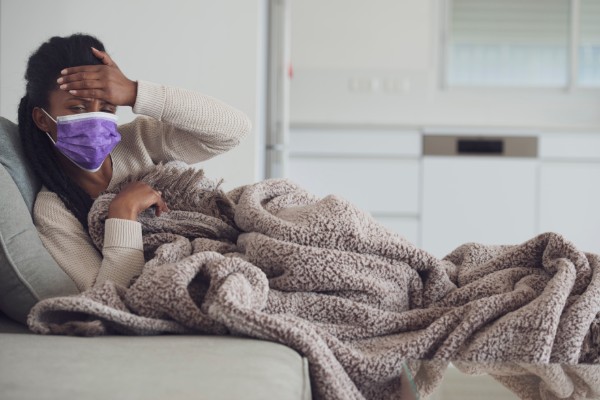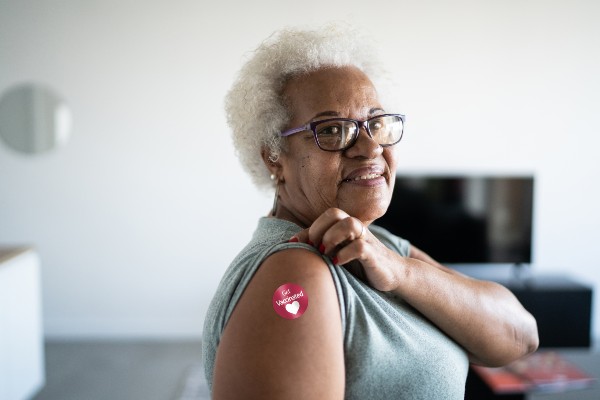The COVID-19 virus will likely be circulating this flu season. If you get sick, will you be able to tell the difference between flu and COVID-19?
According to Rebekah Sensenig, D.O., Infectious Disease Specialist with Riverside Health, the only way to know for sure if you have COVID-19 is with testing.
“There are important differences between flu and COVID-19,” says Dr. Sensenig. “But their signs and symptoms may be indistinguishable.”
Below, we share some similarities and differences between COVID-19 and flu and why getting a diagnosis matters.
COVID-19 and flu – illness types
Similarities: COVID-19 and flu are both contagious respiratory conditions caused by viruses. This means they’re both illnesses that result from viral infections that spread from person to person.
Differences: While both COVID-19 and flu are contagious respiratory illnesses, the viruses that cause them are different. COVID-19 is caused by the SARS-CoV-2 virus, a type of coronavirus. Flu is mainly caused by two types of influenza viruses – types A and B.
COVID-19 and flu – signs and symptoms
Similarities: The Centers for Disease Control and Prevention says both COVID-19 and flu can cause the following signs and symptoms, which can range from mild to severe:
- Fever or feeling feverish or having chills
- Cough
- Shortness of breath or difficulty breathing
- Fatigue or tiredness
- Sore throat
- Runny or stuffy nose
- Muscle pain or body aches
- Headache
- Vomiting and diarrhea (more common in children than adults)
Differences: Flu symptoms usually come on suddenly whereas COVID-19 symptoms may take longer to progress. New loss of taste or smell can also occur with COVID-19.
COVID-19 and flu – incubation periods
Differences: The incubation period – or the time that passes between when you get infected to when you first show symptoms – for the flu can be anywhere from one to four days. For COVID-19, it can be anywhere from two to 14 days, with five days being the average.
COVID-19 and flu – contagious periods
Similarities: The contagious periods – or the amount of time you can spread a disease to others – for both COVID-19 and flu begin before symptoms appear.
Differences: Most people with flu can spread the illness to others for about one day before they show symptoms. They then can remain contagious for up to two weeks, with five to seven days being the average contagious period for most.
Though the contagious period for COVID-19 is still being researched, the CDC says it’s possible for people to spread the illness to others for about two days before they show symptoms. They then can remain contagious for at least 10 days once they have symptoms. The CDC also says it’s possible to be asymptomatic and remain contagious for at least 10 days after testing positive for COVID-19.
Health risks
Similarities: Both illnesses can result in severe health complications and even death. Older adults, people of all ages with certain medical conditions and pregnant women are all at high risk for developing severe flu or COVID-19 complications.
Differences: Health complications from COVID-19 are rare in healthy children, but this group is at risk for developing severe complications from flu.
Why find out if you have COVID-19 or flu
Since most people who get these illnesses can recover at home with no medical care, why find out if you have COVID-19 or flu?
“Learning which one you have matters because it will help you know how long you need to self-isolate and what treatment you may require,” Dr. Sensenig explains. “You’ll also be able to tell others with whom you’ve been in contact that they may need to take precautions.”
In terms of treatment, she says that those at high risk for flu complications may be prescribed an antiviral medication if they test positive for flu. And for both COVID-19 and flu, if your condition gets worse, you’ll receive faster treatment if you already have a positive test result.
If you have respiratory symptoms and aren’t sure if you need testing or medical care, call Riverside Nurse for help.



